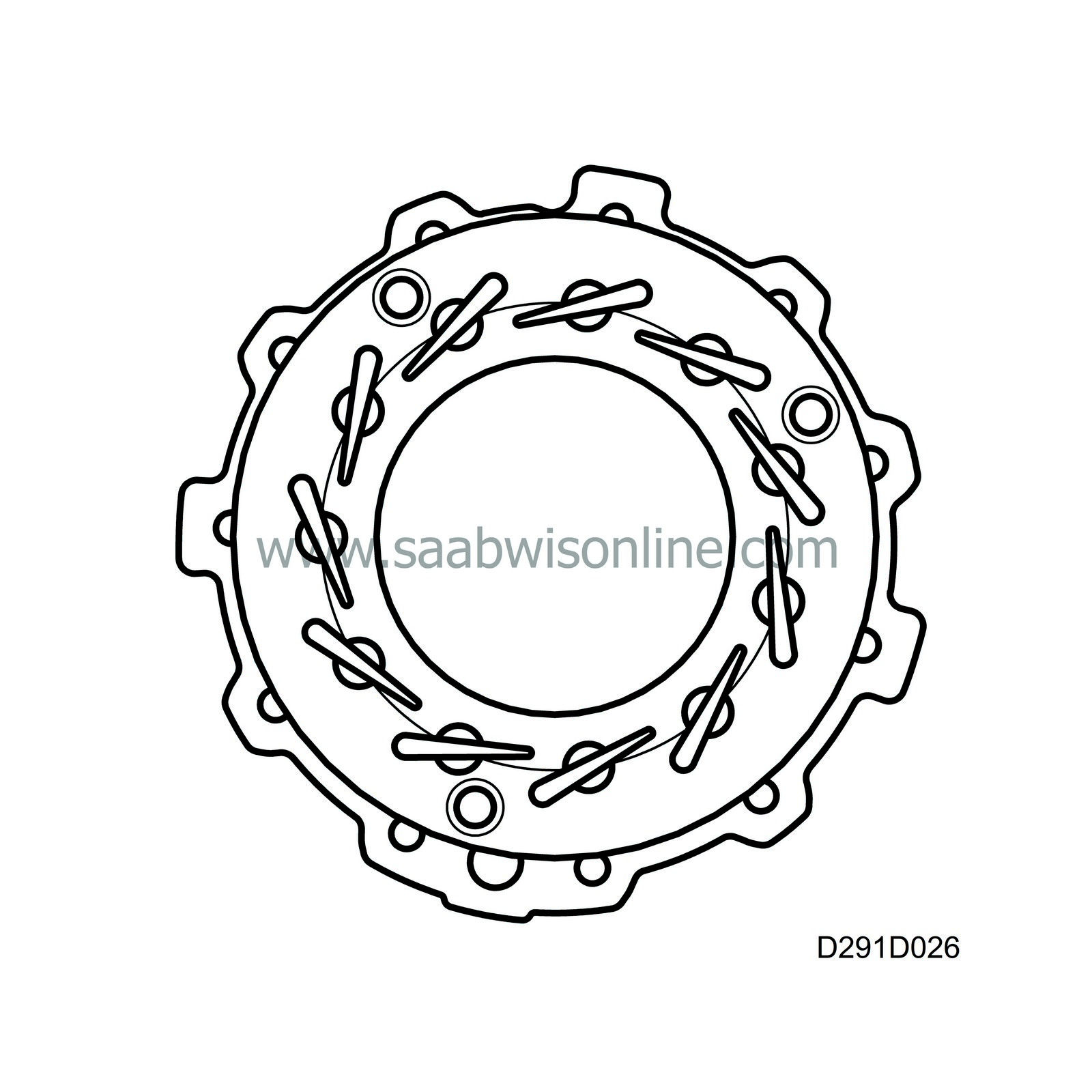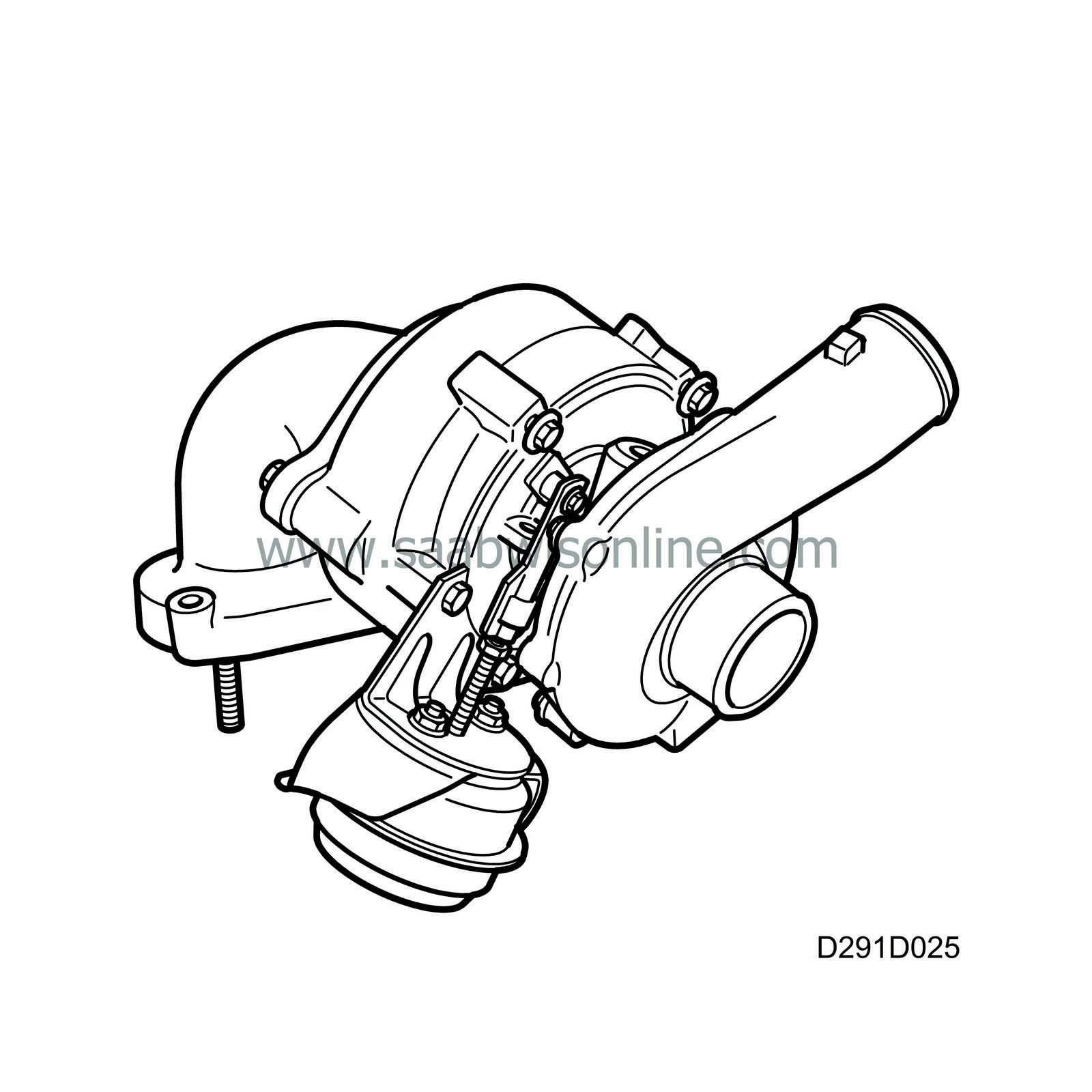Turbo pressure control
| Turbo pressure control |
.

This controls the turbo so that on low gas flow, the turbo speed increases and hence the boost pressure. This means a higher engine torque even at low engine speed. At higher gas flow, the turbo unit speed is reduced to avoid over-revving of the turbo but still give the desired boost pressure.
The turbo pressure, which is dependent on the engine speed and load, is monitored continuously via a pressure sensor mounted on the intake manifold. The vacuum box which controls the guide rails is larger than in previous turbo designs. The vacuum pump has a bigger connection than before to ensure that the vacuum box has adequate vacuum.
| • |
The engine develops more torque at low speed.
|
|
| • |
As the working temperature of the turbo can be kept down, the compression of the air to the cylinders is improved, which increases power.
|
|
| • |
The turbo responds more quickly to the desired torque which means improved drivability.
|
|
| • |
The engine consumes less fuel and has reduced emissions.
|
|



